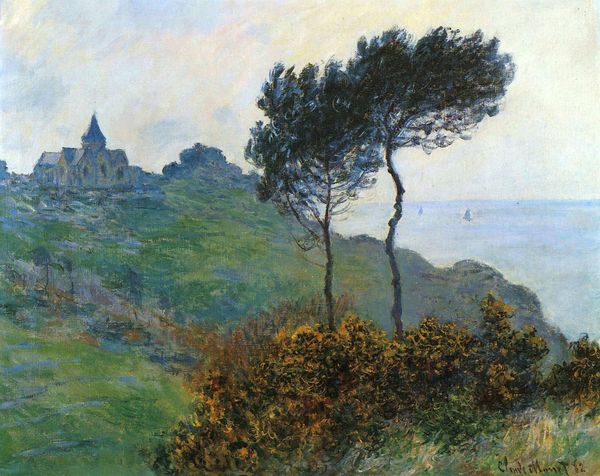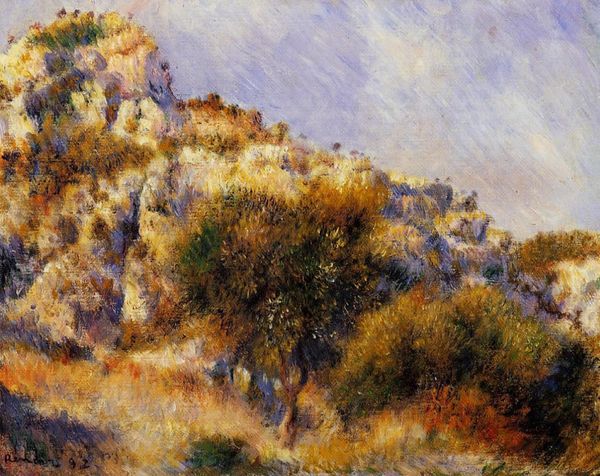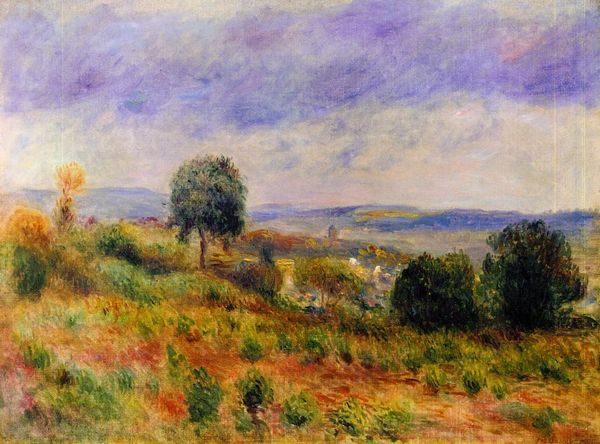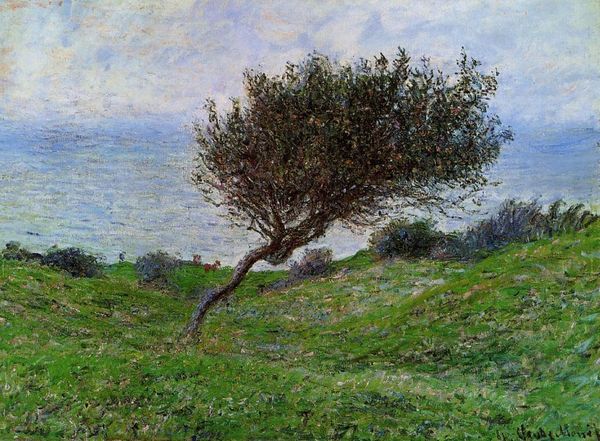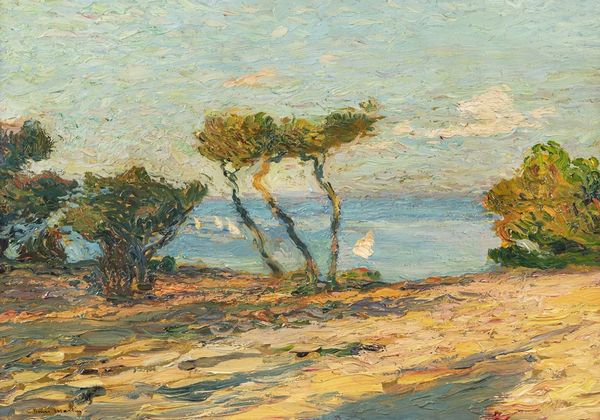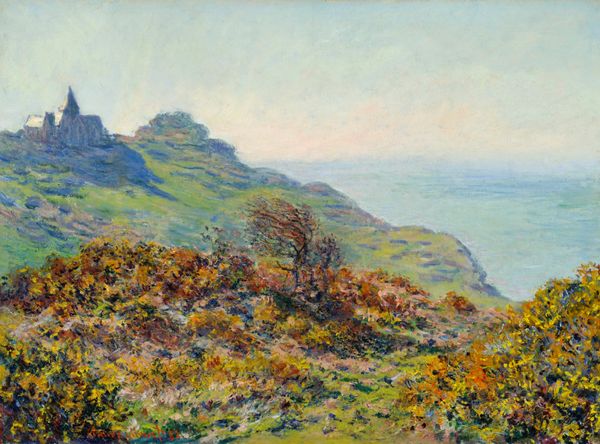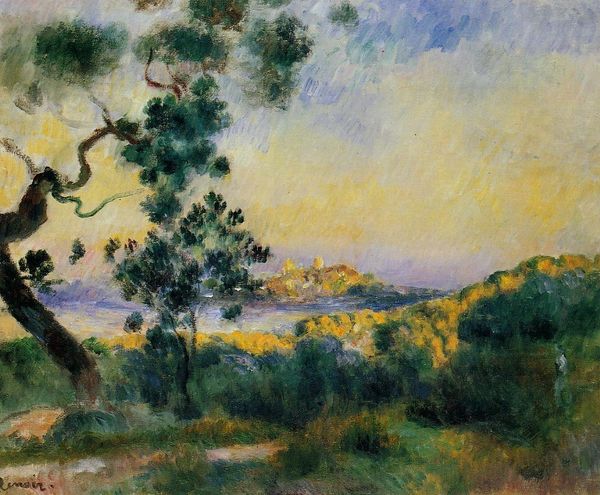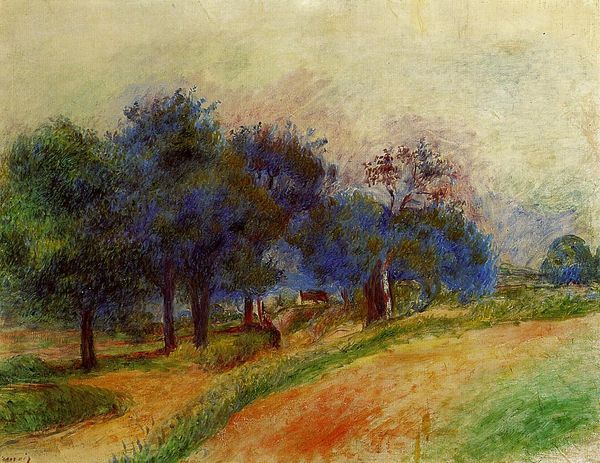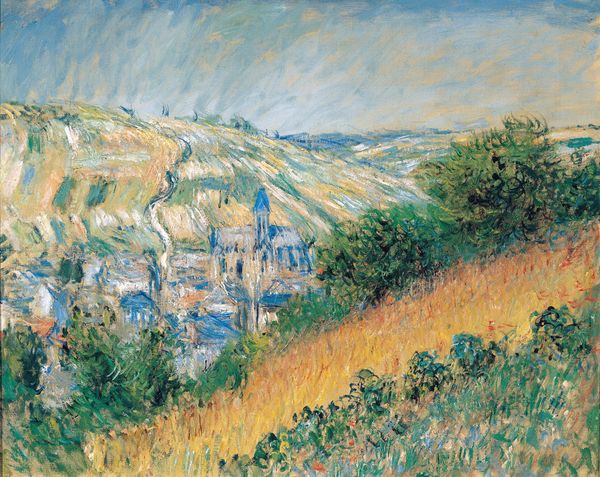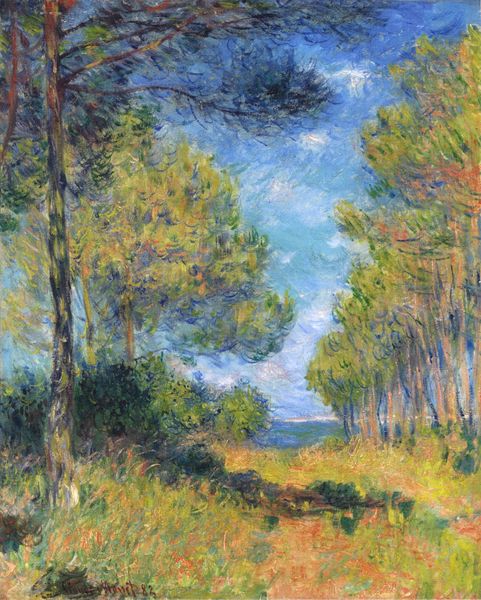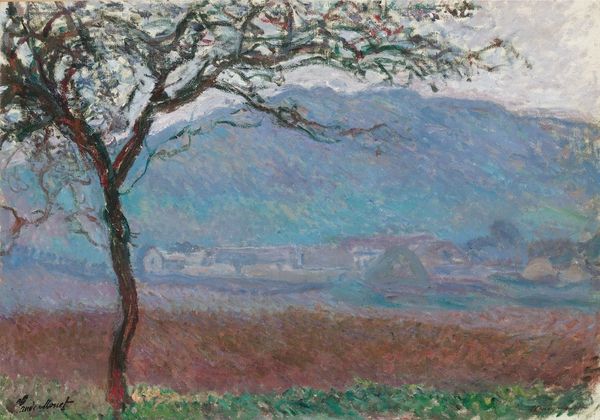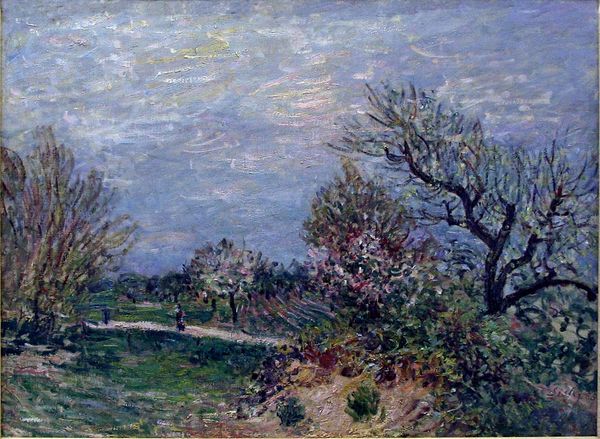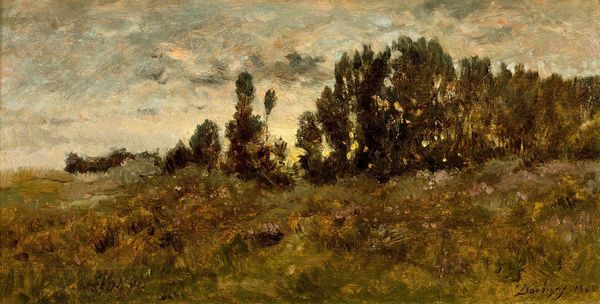
Dimensions: 81.3 x 65 cm
Copyright: Public domain
Editor: So, here we have Claude Monet's "The Church at Varengeville," painted in 1882 using oil on canvas. The overall scene has such a hazy, almost dreamlike quality, yet when you look closely you can almost feel the thickness of the paint. What strikes you most about it? Curator: Well, immediately my eyes go to the way Monet handles the materiality of paint. It’s not just about depicting the church or the trees, but about the very act of applying paint to canvas. Look at the visible brushstrokes, the thick impasto. He's showcasing the labor, the process of creation. How does that emphasis on the physical materiality change our understanding of what he is communicating, rather than simply capturing a landscape? Editor: That's a great point. It's almost as if the painting is documenting its own creation. Do you think his plein-air method of painting contributed to that effect? Curator: Absolutely. Working outdoors meant dealing with the elements, the changing light, and the inherent instability of the environment. That immediacy translates directly into the rawness and texture we see on the canvas. It wasn’t about creating an illusion of reality, but reflecting the real conditions of artistic production and manual effort. It becomes less about 'what' is being painted and more about 'how' and 'where' the work came to exist. Consider the social implications: who had access to these materials, and what were their resources? Editor: That shifts my understanding significantly! Seeing it as an object born of specific materials, labor, and a social context, gives it such greater meaning. Curator: Exactly. Examining the materials and their context opens up a whole new avenue for interpretation, right? Editor: Yes, it makes me think differently about Impressionism in general. Curator: And hopefully appreciate the labor embedded within its surface!
Comments
No comments
Be the first to comment and join the conversation on the ultimate creative platform.
